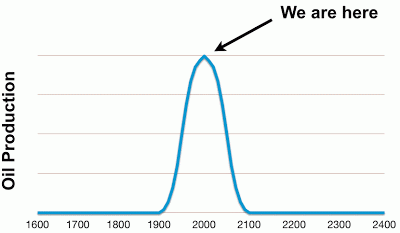Yesterday the Notre Dame Cathedral in Paris caught fire and, while it was saved from complete destruction, a question has come up about restoring the building. Where will they get timbers big enough to replace the roof? Those timbers were cut 800+ years ago when Primal Forest was still available, and trees tall enough for that roof were easy to come by. According to current news reports it’s believed that France, and maybe Europe as a whole, does not currently contain trees large enough to rebuild the Notre Dame roof.
There is a perhaps apocryphal story of a similar problem in a different building that has a lesson for us about the value of long-range thinking.
The kind of long-range thinking that would have us properly examining the world around us to see what kind of world we are to create on a multi-hundred-year time frame, rather than constantly thinking about business results for the next quarter.
This story has to do with the New College at Oxford University. Despite having been built in 1379 the New College is still called New because it’s newer than some of the other colleges in Oxford. The story, which originates from Gregory Bateson, and which I originally heard through The Whole Earth Review magazine, is that the Great Dining Hall at New College had huge oak beams 40 feet thick. By the late 1800’s an entomologist went up to inspect the beams and found they’d become full of beetles and had to be replaced.
This went up the chain of command, and the College Council didn’t know what to do, so they invited the Forester of the college to talk with him. These colleges had been endowed with College Lands, and there was a Forester to tend after the lands, but the Forester hadn’t been to the college in a long time. They asked him where to get oak beams sufficient to replace the roof and he replied “Well sirs, we was wonderin’ when you’d be askin’.”
Obviously we have to adopt one of the countryside British accents to get the right tone of what the Forester had to say. Turns out, according to Bateson’s story, that back when the New College was founded a grove of oaks had been set aside to replace the beams of the dining hall. From one Forester to the next, they told their successor “You don’t cut them oaks. Them’s for the College Hall.”
According to a post on Atlas Obscura![]() , the reality is a little different than Bateson told. The land which held the oaks that were used for that project was not acquired by the New College until 1441. Oh, and the roof had been rebuilt once before using pine because suitable oak timbers weren’t available, making the veracity of the story suspect.
, the reality is a little different than Bateson told. The land which held the oaks that were used for that project was not acquired by the New College until 1441. Oh, and the roof had been rebuilt once before using pine because suitable oak timbers weren’t available, making the veracity of the story suspect.
Still, the story is instructive to us about a way of thinking and planning for the future.

To tie this together with the Notre Dame fire. The primary damage to the Notre Dame appears to be that the wood roof burned away. That roof was constructed from trees that grew in a Primal Forest over 800 years ago. It’s believed that France does not contain a forest with equivalent trees. Maybe there are no equivalent trees today anywhere in Europe. And if there were a stand of equivalent trees, I imagine an environmentalist group or three would rise up to protest a plan to cut those trees.
In other words, the builders of the Notre Dame did not set aside a grove of trees like in the apocryphal story of the New College dining hall. Therefore they doomed their descendants to the problem of replacing the roof in a few hundred years.
If we’re building something today — humans are always building something new — then isn’t it our duty to future generations to preplan the future upkeep of that thing?
Since The LongTailPipe is about transportation let’s apply that idea to the transportation system around us. What of the current transportation system is designed with a thought for 200 or 700 years from now?

We have plenty of roads and bridges that hug coastlines. There are some roads that are stunning drives, like California Highway 1 south of Monterey. But that section of highway routinely collapses because of heavy winter rains, meaning the coast there is unsuitable for building expensive infrastructure. Other roads or bridges are going to be flooded as sea level rises.
One look at that picture tells you this mountain slope is in a long slow process of sliding into the ocean. As the waves pound the beach below, the slope is regularly undercut to the point where some of it falls off to become new beach. Any engineering effort put in to shore up the existence of the highway is folly, because this mountain is simply in the process of becoming new beachfront.
We are dooming our descendants to pay for expensive road or bridge rebuilding, simply because we did not think ahead.
How many airports are right at the waters edge? JFK Airport and La Guardia Airport both on Long Island, and San Francisco International, are some that come to mind. What will happen to these very busy airports when the sea level rises 10 feet or so?

A hundred years ago our ancestors addicted our society to crude oil and coal. These seemed like cheap abundant energy sources, and the thought that fossil fuel supplies would run out has been routinely scoffed. But our ancestors doomed us with a problem of replacing those energy sources as they are beginning to run low.
What has become known as Peak Oil is an observation that oil fields which are half depleted require more and more effort to extract oil. Sum the total of oil fields around the planet, and it was predicted in the 1960’s that a global peak of oil production would occur around 2005 or so. Sure enough there was a peak in production of “conventional oil” (the easy-to-extract stuff) around that time frame, which was solved only because of Fracking.
What’s important is not the short term availability of new crude oil supplies due to fracking. That too will run out, and if you view it from a broad-enough perspective you see the problem as shown above. That ultimately all crude oil supplies will start to run low.
What happens on the downslope of that chart? Society as we see around us is completely addicted to crude oil. Our compatriots are wasting it away like there’s no tomorrow. Even that phrase is a symptom of short term thinking. If the oil companies can no longer increase crude oil supplies to match increasing population, then what happens to the economy as the machines can no longer be fueled?
The generation of our grandparents doomed us to face this problem. So far the society around us is failing the test, and will pass the problem on to our descendants.

We’re currently told that electric cars will do a lot to solve some significant problems our society is facing. The offered solution might be enough to address climate change and stave off climate catastrophe. Except the latest predictions say we have 10 years in which to completely stop fossil fuel usage, or the planet will reach a climate tipping point of no return. And the prospect of reaching that goal is extremely bleak considering the strong fight underway by oil/coal company interests to protect the interests of fossil fuel purveyors.
That electric cars may be a case of too-little-too-late there are problems they do not address.
Traffic congestion, for example. Individually driven cars is what causes the daily traffic jam because this is the least efficient use of roads to transport people. A simple bus or train system transports far more people per square mile of road surface, while circumventing the problem of parking lots for cars.
In the 1940’s when General Motors and others destroyed public mass transit systems across the USA, they doomed us to living through daily traffic jam gridlock. The current efforts to prevent mass transit systems from developing in the USA ensures our descendants will also face this problem.

- Is there enough Grid Capacity for Hydrogen Fuel Cell or Battery Electric cars? - April 23, 2023
- Is Tesla finagling to grab federal NEVI dollars for Supercharger network? - November 15, 2022
- Tesla announces the North American Charging Standard charging connector - November 11, 2022
- Lightning Motorcycles adopts Silicon battery, 5 minute charge time gives 135 miles range - November 9, 2022
- Tesla Autopilot under US Dept of Transportation scrutiny - June 13, 2022
- Spectacular CNG bus fire misrepresented as EV bus fire - April 21, 2022
- Moldova, Ukraine, Georgia, Russia, and the European Energy Crisis - December 21, 2021
- Li-Bridge leading the USA across lithium battery chasm - October 29, 2021
- USA increasing domestic lithium battery research and manufacturing - October 28, 2021
- Electrify America building USA/Canada-wide EV charging network - October 27, 2021












